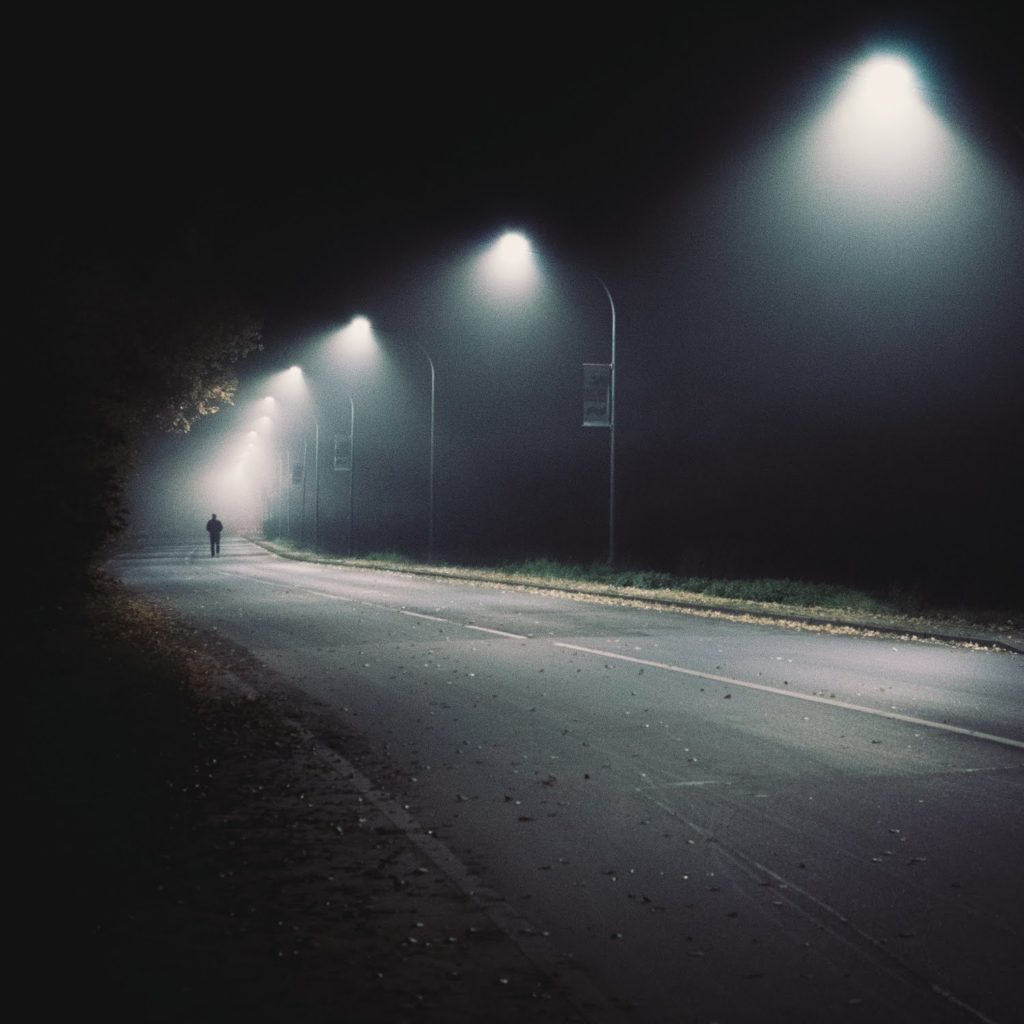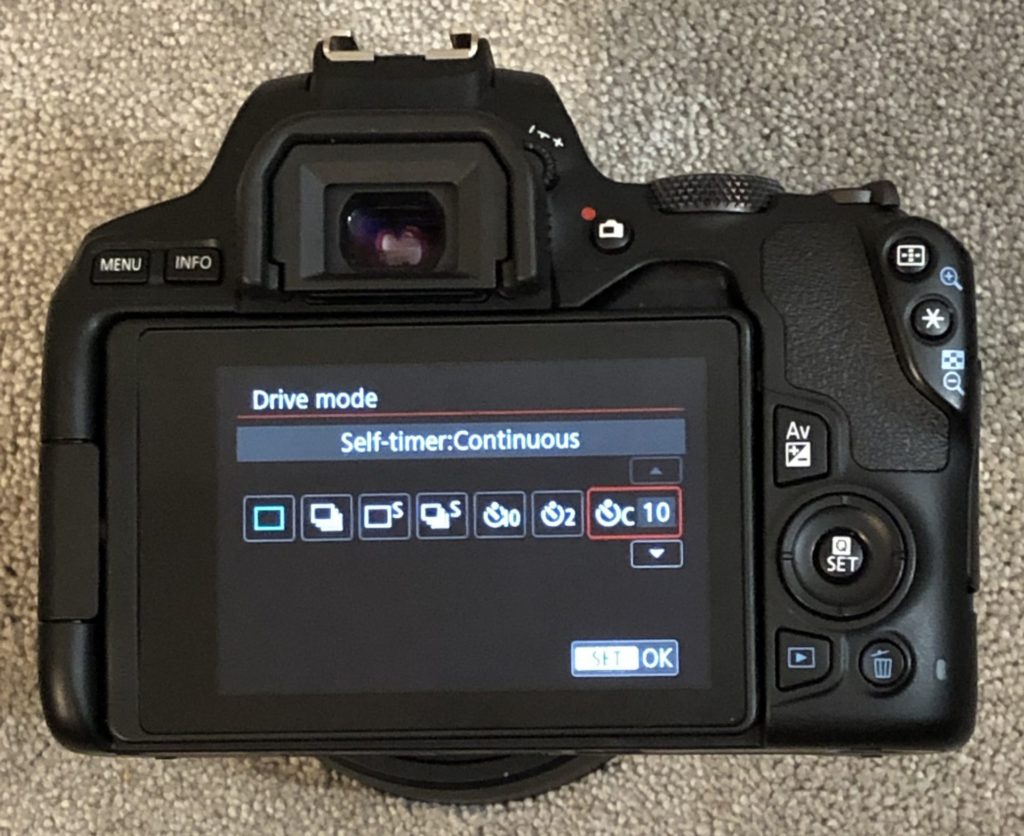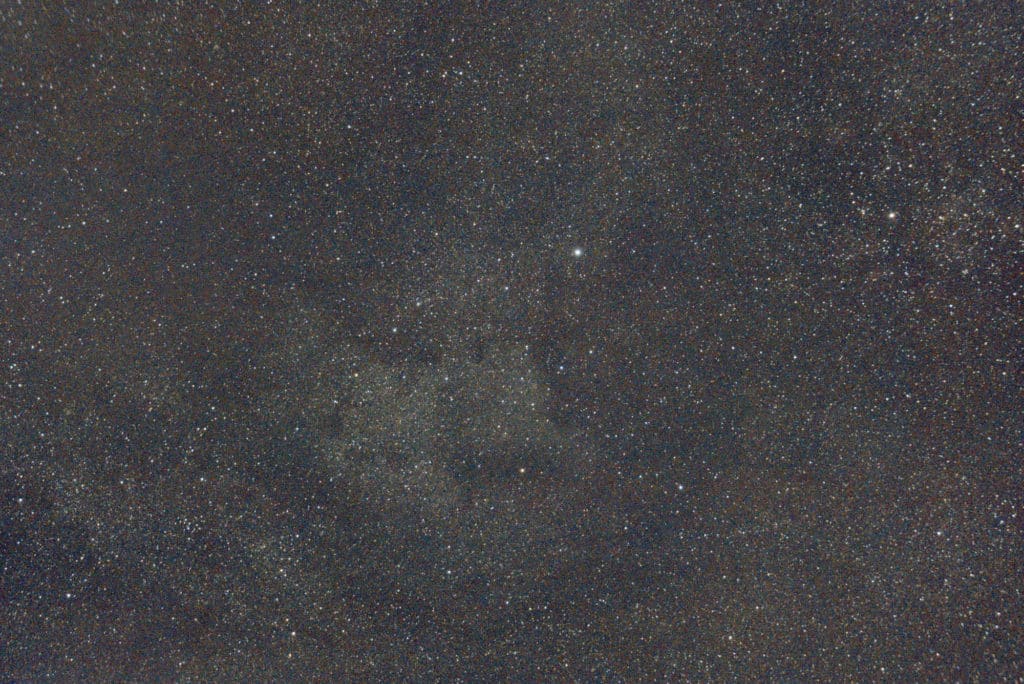
Let’s Try Something New
I was sorely tempted to take another crack at Cassiopeia having been blessed with clear skies. But with what I had learned the previous night, I was eager to try something new. Additionally, I wanted to attempt to shoot in a different spot to see if the light pollution gradients would be any better. So I thought I’d see what I could catch around the constellation Cygnus and more specifically, its bright star Deneb.
New challenges, new problems. Generally speaking, this imaging session went a lot more smoothly than the previous one. The results were a lot better as well. However, I got my first taste of the pernicious nature of light pollution. Curse you light pollution!
Start With the Positives
With bug spray in hand and a new teenage recruit by my side, I set out for my second night. My goal was to take about 500 light frames with the same settings I used on my first night out. The initial setup was a lot easier and with Deneb very high in the sky, it made for an easy target.

While messing around with my camera in the afternoon, I stumbled upon a new feature – Drive Mode. I didn’t want to invest in an intervelometer right away and clicking the app on my phone for every single light frame didn’t exactly measure up to my son’s idea of a good time. So on Canon cameras, I learned about the Drive Mode feature. It lets you take up to 10 snaps at a time with the selected camera settings. 90% efficiency gain == good times!
The other thing I realized is that if I take my focus frames with a different ISO than I’m imaging with, then the photos are easier to sort when I get back home due to the difference in file sizes. Ha Ha, I’m becoming a master!
Season With a Dash of Lessons Learned
As I started shooting, I very quickly discovered I was going to have a problem. The tripod adjustment level that adjusts the viewing angle was inevitably going to collide with the tripod leg due to the height of Deneb in the sky. A little more thoughtful planning around my tripod position in the future will clear that up. I didn’t want to change anything at this point so just carried on.
My flat frames still aren’t right. I need to do a little research and figure out how best to take these. My exposure levels are definitely off which is causing some interesting color casts in the stacked photos.
And yeah, light pollution is definitely something I am going to have to think about. It’s tricky to correct in post-processing and I know that anything I correct is going to also have an impact on my target signal. Fortunately, I still have a lot of other things to learn and perfect and I can do so with or without having to worry about light pollution.
And Voila!
I processed this particular photo using Siril because it was also free and quite frankly, looked a little snazzier than Deep Sky Stacker. Again, I’m just learning at this point so figured I’d give it a shot.
While I was generally happy with the results that Siril produced, it’s a hog when it comes to disk drive space. And yeah, don’t even bother if you’re using spinning disks, it would take forever to finish processing and stacking. I have a decent computer and it still took about 6 hours to process my images – almost all of that time is read/writes to my drive!
So here is the result. I’d say this is a step up from the picture I got of Cassiopeia yesterday. Deneb is prominently featured in the center and you can definitely make out the North American Nebula just below and to the left. Oh, and all the screwy gradients in the photo??? Say hello to Krakow, Poland. Well, it’s another notch in the belt for the Astrophoto Gallery.

The gradients in the photo above make it obvious that I have a long way to go in post-processing my images. That, and finding a way to get to darker skies to avoid the light pollution impact. But for right now, I’m really just interested in exploring what I can actually image. I’ll up my game in post-processing in due time.
Parting Thoughts
It’s one thing to watch someone else go out and take photos or to look at photos of outer space online. It’s really quite a different experience to be able to go outside and take photos of your own. I’m really surprised I didn’t pick this up years ago – and wish I had.
Even though I’m just getting started, it’s quite a feeling to put the time and energy into imaging something and then begin to pull it out in post-processing. Never imagined there was so much to see just through the lens of a DSLR camera.
